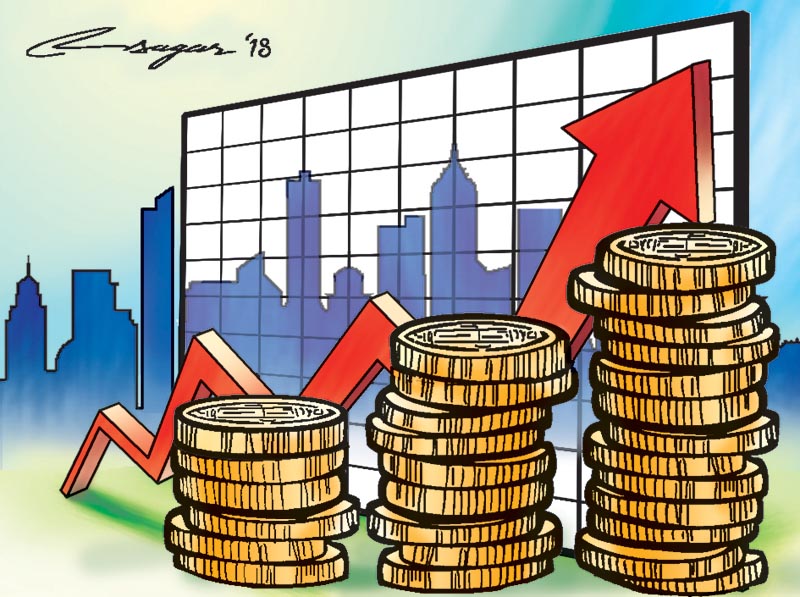Financial growth: How to achieve it?
Economic revolution is something everyone is talking about these days. To achieve this, while lending rates should be put in check, credit should go towards priority sectors such as agriculture, tourism, energy and industry that will create more jobs
The financial market in recent months has been abuzz with two key issues – shortage of loanable funds and higher lending rates. Interest rate is a debatable issue. At what rate a bank should be lending is fundamentally defined by the cost of deposits.
Banks are usually the medium between depositors and borrowers. They buy deposits at a lower rate and lend the money at a higher rate. But higher lending rates are hitting the borrowers, especially the business community, hard and the financial system is facing increased vulnerabilities. This has also resulted in job cuts, as rising costs have to be maintained by the borrowers.
The Nepal Rastra Bank (NRB) has currently imposed five per cent of interest spread for commercial banks. Interest spread is the difference between the average lending rate and the average borrowing rate. This means if commercial banks buy deposits at 11 per cent, they can lend the money at the rate of 16 per cent. However, some banks have gone beyond the regulatory limit of five per cent interest spread, stating that their cost of funds is relatively high.
Let’s analyse the behaviour aspects of money coming into the system.
For various months, it has been said that deposits have decelerated mainly because of the slowdown in remittance inflow and government spending. The current growth of 5.3 per cent from 4.9 per cent in the previous year, however, is not a slowdown. Nonetheless, remittance growth cannot be termed a long-term solution for economy.
When it comes to government spending, it has been sluggish over the years. There has been a tendency of expediting capital expenditure during the last quarter of the fiscal year. Concerns have now grown whether provincial and local governments are going to follow suit. This will have detrimental effects.
High interest rates hugely affect productive and manufacturing sectors.
Interest rates do have a direct relationship with inflation and job creation. Volatility in the rates is a usual phenomenon though.
When money supply increases, inflation tends to rise, according to the quantity theory of money.
Banks usually curtail lending due to fear of regulatory limit of credit-to-core-capital-and-deposits ratio (CCD). Due to this, prolonged economic setbacks tend to continue.
Deposits are not as comfortable as they should be. Sluggish deposits and their cumulative impact ultimately hamper the sustained growth.
A huge amount of money is set to exit from the banking system as Nepal Airlines Corporation in the form of advance payment
For two wide-body aircraft that Nepal Airlines Corporation is planning to buy. Tighter lending situation is also on the cards. Banks too are facing multiple pressures, and to expand their lending, they will have to increase their deposit stocks.
Needless to say, lower deposits squeeze banks’ ability to lend, which ultimately hampers economic activities. Higher lending rates pose significant threats to business operations, as higher rates will spike the cost of production and doing business. This then can result in job cuts, as firms and manufacturers have to shell out more money for debt servicing. When productive sectors are hit, economy bears the brunt.
For the economy to rebound, the federal government at the centre should ensure timely capital expenditure.
There should be regular fiscal stimulations, especially when our federal, provincial and local governments are just about to start their work. It must be understood that compliance is the key for sustained economic growth.
One side of financial market disequilibrium is stemming from a whopping rise in the informal banking activities as well. Some scrupulous people have started parallel banking system, which hits the formal banking system hard. There has also been the tendency of money stashing despite not having any business activity. The authorities — and the central bank in particular — must focus on productive sectors.
The informal money transaction must be curbed. Simultaneously, there is a need to conduct an extensive research on it. The government authorities can then use and share the findings with lawmakers to introduce appropriate legislations to address the anomalies.
Secondly, there has to be a widespread campaign on financial literacy, which should make people aware about the benefits of formal banking and the consequences of informal banking. Governments at all levels should also accelerate their fiscal operations. Economic revolution is something everyone is talking about these days.
To achieve this, priority sectors for lending should be identified. Agriculture, tourism, energy and industrial sectors should be the priority. Credit must go towards these sectors so as to create jobs. Nonetheless, there should be constructive mechanism in place to address the risks associated with lending to priority sectors. For this, insurance and forward contract need to be enforced in all sectors. Interest rates on lending need to be put in check through appropriate measures. While doing so, stimulus needs to be given directly at the producer’s level. This will give a fillip
to domestic production, create jobs, reduce ballooning trade deficit and stimulate ultimately economic growth.
Giri is deputy director at Nepal Rastra Bank






